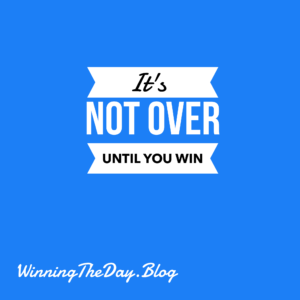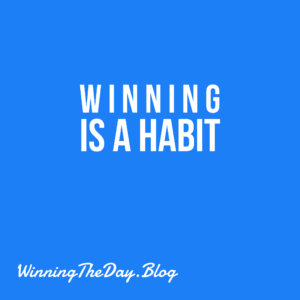Avocado toast, Insta, and TikTok can only go so far… nearly 69M Gen Z and 72M Millennials. They won’t live with Mom and Dad or Sis forever. Oh, and ahead of them? 65M Gen X’ers.
Do the Math…
#WinTheDay
#ListToLast

Avocado toast, Insta, and TikTok can only go so far… nearly 69M Gen Z and 72M Millennials. They won’t live with Mom and Dad or Sis forever. Oh, and ahead of them? 65M Gen X’ers.
Do the Math…
#WinTheDay
#ListToLast

Is The Sky Falling?
Adam Smith, some 233 years ago, nailed it with the concept of supply and demand. Unfortunately, he is not here now to experience “clickbait!” If you are reading a headline like “Home Prices Are Falling,” be skeptical.
Why? In general – in most markets – it’s just not the case. Across the US, home prices are up 2.4% to a median of $425,000 compared to last year. Are there exceptions – yes, in a few segments in a few markets – reach out to me for details, or use my Altos link to look at your specific market.
Despite significant mortgage rate increases and affordability challenges, a resilient economy combined with demographic forces of demand, there simply are not enough homes for the number of qualified buyers.
Demand did drop in 2023, yet so did supply. And Adam Smith nailed it – supply and demand forces worked. To place this in perspective, at this time in 2019, there were 822,000 homes for sale nationally: today? 546,000.
Just like Wall Street, consumers love stability and predictability. As mortgage rates stabilize and normalize, we are seeing slightly more immediate sales vs. last year. This is a leading indicator that 2024 will be stronger than 2023 from a sales perspective.
Other leading indicators? For newly homes listed, Altos is reporting a few percentage points higher on the initial list price vs. the same time a year ago, and immediate sales of those homes are slightly ahead of last year.
Price cuts? Trended over time, we see about 33%; nationally, we are at 38%, so a few percentage points higher – more than normal. I suspect these relate more to affordability than other factors.
The team over at Altos reports and updates every Monday – it’s a leading indicator – much earlier than traditional channels. I’m a fan. Win The Day!

10 Ways To Take Responsibility In Business + What Is Parkinson’s Law
And Why Should You Care?
The top 10 list for taking more responsibility in your business… starting with number 10:
Ten: Take responsibility for your thoughts, feelings, words and actions.
Nine: Blame less.
Eight: Complain less.
Seven: Refuse to take anything personally.
Six: Make yourself happy.
Abraham Lincoln said this more than 150 years ago, “Most folks are about as happy as they make up their minds to be.”
Five: Live more in the present moment.
Four: Use the power of intention.
Three: Work expands to the time allocated (Parkinson’s Law)
Two: Start with and assume positive intent.
One: What would #1 be for you?
What would #1 be? How about: “Don’t place your monkey on my back?”
What is Parkinson’s Law?
Parkinson’s Law is the old adage that work expands to fill the time allotted for its completion.
The term was first coined by Cyril Northcote Parkinson in a humorous essay he wrote for “The Economist” in 1955. He shares the story of a woman whose only task in a day is to send a postcard – a task which would take a busy person approximately three minutes. But the woman spends an hour finding the card, another half hour looking for her glasses, 90 minutes writing the card, 20 minutes deciding whether or not to take an umbrella along on her walk to the mailbox … and on and on until her day is filled.
Read his original article here.
Why should you care?
Deadlines can cause procrastination or even prompt people to fill their time with trivial matters.
Implication?
One: Assign a “time limit” to everything. Example: in the next hour, I will complete ____. If you say, it will take 30 minutes to get your shipping done or 90 minutes, both are right. The work will expand to the time given. Allocate your time!
Two: Putting projects into the context of larger goals and creating timelines in days rather than weeks are two strategies to help overcome Parkinson’s Law.

NAR, Lawsuits, and Doing The Right Thing
During the COVID lockdown, I wrote a blog titled, “Doing The Right Thing Is Always The Right Thing,” today’s unveiling of the recent lawsuit settlements brought that to mind.
I’m writing this from Tahoe, where I was part of a panel with the Realty Alliance on scaling your business. All the companies attending are the best of the best, yet some have 100 years or more of operations. You create a 100-year enterprise by always doing the right thing.
Some 20 years ago, I worked with buyers, and a co-op commission came up that was $1.00. Because I had adequately educated my buyer clients, I could show homes of any commission level—the right thing.
Today’s news released by all the major real estate news outlets summarizes some of the settlement points; only one is breaking news, in my view. The summary:
Significant
Implication: Significant policy discussion at the local associations. And the decoupling of NAR, state associations, and MLS. The watch out – this could be like CPA’s not having GAP (generally accepted accounting principles). The wild wild West will not serve the consumer.
I’m a fan of the local and state associations and NAR. I see the value, the advocacy, the standards, the services like RPR, economic reports and research and so much more. More on this in another post.
I’m also a fan of freedom of choice… those who deliver the most value will not struggle to maintain members.
The Right Thing – Nothing Really New
The settlements also include the following:
The implication here? Nothing new – for over 20 years I’ve taught my agents to do the same, and executed my practice with these principles. Bringing these practices to a higher level of awareness is a good thing. Yet here is what I know, those who deliver the most value will not struggle to create thriving real estate practices.
For the vast majority of my REALTOR® colleagues – regardless of your brands position – is leadership and service not abdication. Get involved and be the change you want to see.
Doing the right thing is always the right thing!
The Case Summary:
The implication? List to last. Control your destiny. Become the best listing agent in your market.
#WinTheDay

75% of the year is over… it’s time for a quarterly business and operations review! Is it scheduled? I have a powerful 21 question business review – info@winningtheday.blog
Are you ahead, behind or on track with your goals? In any case “declare it perfect and move forward powerfully.”
Review what’s working, what’s not. Make the adjustments, and keep moving forward.
Basic agenda:
The results will happen – as long as we are all willing to execute the daily activities, track the results, make the changes to the behaviors and engage an accountability partner.
Are you nterested or committed to what’s left of this year?
Perfect!
I ran across a YouTube video – Good with Jocko Willink – that reminded me of my good friend and mentor, Tom Ferry.
Tom and I were blessed to travel and work together on many projects, and I noticed one day when something did not go as planned, he said one simple yet powerful word:
Perfect!
Mark, declare it perfect. Good, bad, or indifferent, Tom would declare it perfect. Something didn’t go our way? Perfect – more time to get better! Unexpected challenges, perfect: we have the opportunity to figure out a solution. It was an intentional mindset and the opposite mindset of many people I know.
It’s an enabling core belief. I was thinking you and I don’t need a new market, a new tool, or a new widget. We need an upgrade to our belief system.
Perfect!
So maybe today, do as George did in Seinfeld Season 5, Episode 22 do the opposite. Or, like Tom does, declare it perfect. And that’s how you’ll win the day.
#WinTheDay

Winter is coming… now is your time.
The next 12 weeks… listings, leverage, and leads.
Your revenue runs at the speed of trust. Think about it… as trust goes up, speed increases and cost goes down.
What if, over the next 12 weeks, we all built more trust by:
Trust is your brand.
That’s how we win the day, month, and the rest of the year.
#WinTheDay

Tuesday mindset: I’m not sure who counted, but research says we can have as many as 60,000 thoughts a day.
Go figure: The person we have the most dialog with is ourselves.
The implication? Ask a better question and get a better answer.
Examples:
Over time, if we are not aware of our self-talk, questions included become a cyclical habit — and, more often than not, a negative one.
With some intention, you and I can turn that around to win the day.

When it comes to growing your real estate business, all the folks I work with have ambitious ideas for growth. Yet, have you stopped to consider that trying to execute too many goals at one time is a barrier to your success? As you and I know, the only way to ensure your ideas for growth succeed is to have a very clear plan of action.
For me, in sports and business, I’ve found success in 90-day sprints.
Whether it is completing the LA marathon or starting a new division of my company, I’ve used 90-day springs. For me, 90 days is long enough to stay engaged, yet not so long it seems out of sight.
Yet, for some of my clients, 90 days is an eternity. For my friend and mentor – a recovering alcoholic – early in his journey, he would say 1 day at a time is too long; some days, I work one minute at a time.
So, if 90 days is too long for you, pick your time: 1 day; 1 week, or 1 month the same concepts outlined here can apply.
So, where do I start? I’d suggest a 7-step approach:
Step one
What is your vision? Your goal? Your outcome? Are your goals – between now and the end of the year – well defined and measurable?
What are your financial expectations and your milestones for success?
What key performance indicators and targets, such as new appointments created and appointment conversion rates, will help drive you forward?
Step two
Assess your current state using a gap analysis. Where are you now, and where do you want to be? Now this is where so many of my clients go overboard.
As type A’s, we want to close the gap on everything and do it now. Step back and think, “Less is more!” I’ve had more success with a singularity of focus.
Step three
Only you can choose your goals and actions. One exercise I’ve always found helpful is the red light and green light exercise:
This can lay the foundation for a perfect 90-day sprint.
Step four
The perfect day exercise. What does a perfect day look like for you? What would your daily routine look like? This is the foundation for your 90-day sprint.
Step five
Time blocking and the daily action checklist. I use a hybrid of the David Allen “Getting Things Done” or GTD and time blocking to manage and prioritize my tasks and projects.
On the other end of the spectrum is Elon Musk: Even though many people point to Elon Musk’s ‘superhuman’ ability to focus without distractions or his freakish level of genius, he states that time blocking is the explanation for his effective time management.
Elon Musk 5 5-minute rule is his secret sauce. It makes you divide your day into blocks of time. Each block is dedicated to accomplishing one or more tasks, allowing you to have a concrete schedule that lays out what you will work on and when.
Step six
Let’s face it, the number one tactic you and I can execute to exponentially grow our business is accountability. The top three barriers to accountability:
My formula?
Step seven
Review, reflect, and redirect.
In the business world, the term “debrief” frequently has had a negative bias associated with it, probably because it is used only when there’s a mistake, a negative outcome, or a fault to find. Yet such a fear-based approach is the opposite of how Blue Angels pilots structure their training, practice, and subsequent success. On the contrary, their goal is to drive fear out of the organization.
The best pilots in the world. Blue Angels pilots create a safe environment for debriefing, where they open and share their wisdom of success and failure side by side. It’s something elite teams know well.
The U.S. Navy Blue Angels use a debrief tool at the end of every single day. It is built into their culture. You might wonder why, if you had a great performance, you would need to deconstruct it.
In sports and in business alike, debriefing sessions have led to wins and increased bottom lines. And the benefits can be even greater. In the right setting, debriefs have the power to save lives. The extreme environment within which Blue Angels pilots perform airborne acrobatics demands effective debriefs—both for the safety of the pilots and spectators.
How often do you debrief wins and losses and capture key learnings to incorporate into your process?
Wrapping up:
The 90-day sprint is all about stretching your ambition. My experience with 1,000 of clients and connections is your growth goals need to be realistic, yet they should stretch you just a little beyond your comfort zone and what you think is possible.
You have a lot to share with this world. So, make this 90-day sprint ambitious. You know it’s perfect if it scares you.
Here is what I know, it is easy to overestimate what you can do in a single week, and that can often leave you feeling like you’re just not making progress on the things you want. However, you can totally underestimate what is possible in a 90-day sprint. So, surprise yourself.
Some Resources:

“Habits are like a rope. They start as a single thread, and with every repetition, you weave another, until they become a strong cable that is difficult to break.”
This simple idea holds a profound truth: your daily actions, no matter how small, are the building blocks of your future. Each choice to exercise, to read, to save money, or to be kind is a thread you’re adding to the rope. Over time, these small, deliberate actions compound into an unbreakable cord of positive behavior that supports you and your goals.
Winning the day isn’t about grand gestures; it’s about the small, consistent actions that, when woven together, become the foundation for a successful life.
